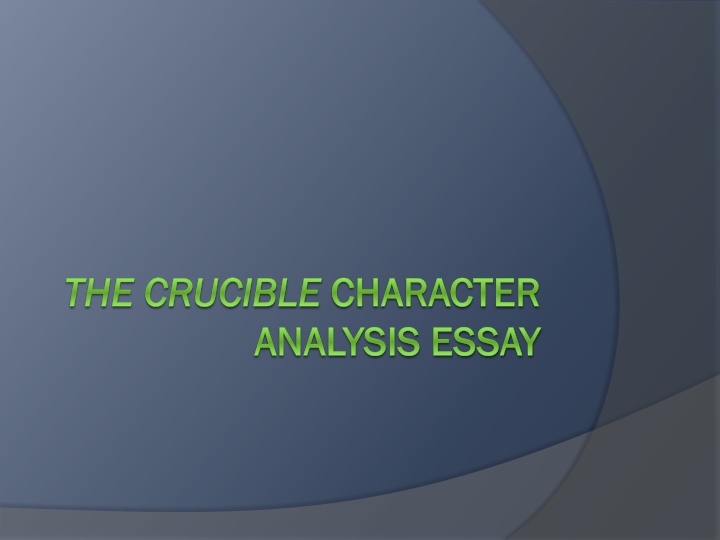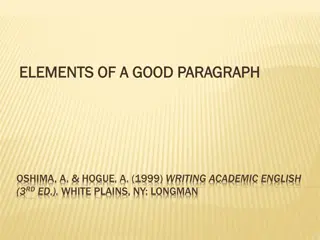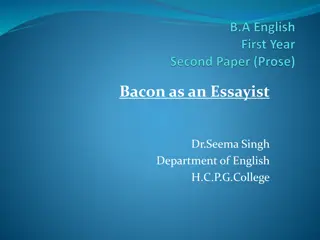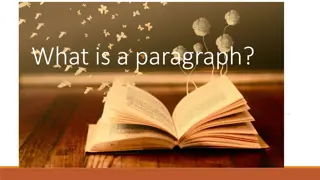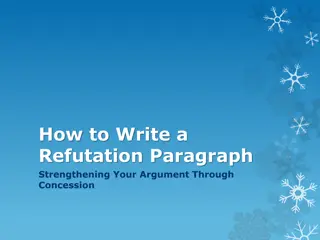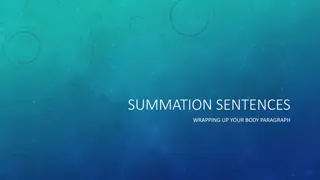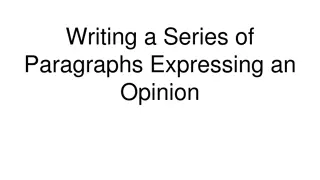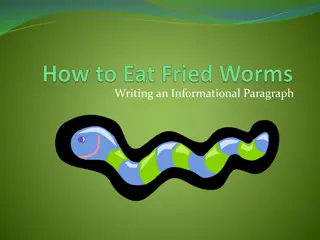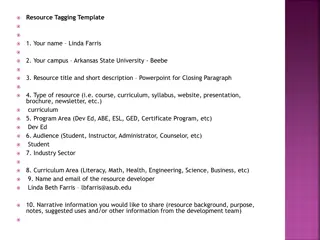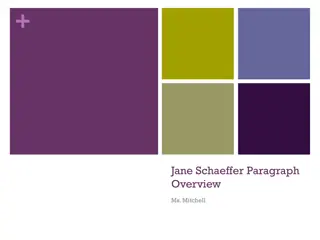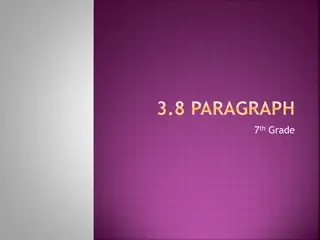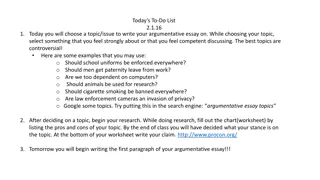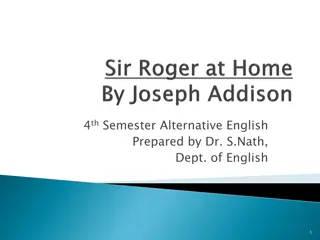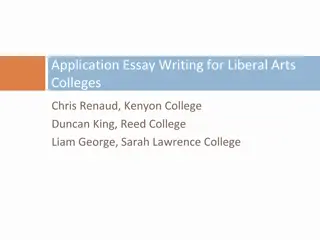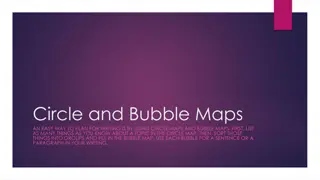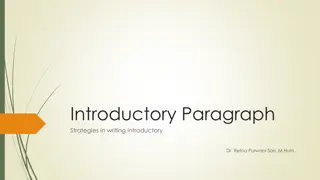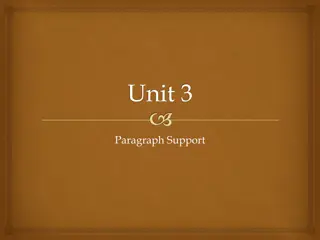Crafting a Compelling Introductory Paragraph for Character Analysis Essays
Learn the essential elements of an effective introductory paragraph for character analysis essays based on "The Crucible." Explore grabbers, information-adding sentences, pivots, set-up sentences, and the thesis to create a strong opening that engages readers and sets the stage for your analysis.
Download Presentation

Please find below an Image/Link to download the presentation.
The content on the website is provided AS IS for your information and personal use only. It may not be sold, licensed, or shared on other websites without obtaining consent from the author.If you encounter any issues during the download, it is possible that the publisher has removed the file from their server.
You are allowed to download the files provided on this website for personal or commercial use, subject to the condition that they are used lawfully. All files are the property of their respective owners.
The content on the website is provided AS IS for your information and personal use only. It may not be sold, licensed, or shared on other websites without obtaining consent from the author.
E N D
Presentation Transcript
THE CRUCIBLE THE CRUCIBLE CHARACTER ANALYSIS ESSAY ANALYSIS ESSAY CHARACTER
Intro Must Have Grabber (Start broad) Full title of the work (italicized if typed/underlined when written by hand) Author s full name Gist of the play Thesis (Get specific)
Formula for an Introduction Grabber Information-Adding Sentence Pivot Sentence Set-up Sentence Thesis
Grabber The first sentence of an introductory paragraph needs to grab the reader s attention. It needs to be broad and introduce the topic rather referring directly to it. (Sample Grabber) Wouldn t it be nice to live in a perfect world? Note: The question is overused. Try other grabbers as well.
Information-adding sentence The second sentence adds information about the grabber, again, still general and not yet referring to the thesis. (Sample Information-adding) In a flawless world, there would be no conflicts, no clashes of character or ideas.
Pivot The third sentence pivots or turns toward the thesis. Hint about the thesis. Use a key word related to your thesis here. (Sample Pivot) In our world, however, every situation has the opportunity to become a conflict, and we can even see these conflicts in the literature we read.
Set-up sentence The fourth sentence is the set-up sentence. It leads directly into the thesis. It should contain the full title, author and gist of the work. (Sample Set-up) O Pioneers!, a novel by Willa Cather, is an excellent example of how we can use these situations as learning experiences.
Thesis The final sentence of the introductory paragraph is the thesis. (Sample Thesis) The various conflicts in Cather s novel are tools which she uses to teach us that all relationships depend on understanding, trust and perseverance.
Sample Introduction (Grabber) Wouldn t it be nice to live in a perfect world? (Information-adding) In a flawless world, there would be no conflicts, no clashes of character or ideas. (Pivot) In our world, however, every situation has the opportunity to become a conflict, and we can even see these conflicts in the literature we read. (Set-up) O Pioneers!, a novel by Willa Cather, is an excellent example of how we can use these situations as learning experiences. (Thesis) The various conflicts in Cather s novel are tools which she uses to teach us that all relationships depend on understanding, trust and perseverance.
Thesis needs to cover: The idea that ________ s alienation in The Crucible reveals unpleasant truths about Puritan culture. Adjectives to describe Puritan culture: (strict, harsh, unforgiving, punitive, extremist, legalistic, mysogynistic, etc.)
3 Fully developed Body Paragraphs Topic sentence 3 quotations with 2 sentences of commentary for each Commentary should include analysis of the character and how the character s alienation reveals something about Puritan culture Concluding sentence
Sample Interpretation/ Part of a Body Paragraph John has made it clear that he disagrees with Reverend Parris preaching style and attitudes, and Elizabeth aligns herself with her husband: I think, maybe, we have been too hard with Mr. Parris (1277). This is significant because Puritan belief requires church attendance; the Proctors would be considered rebellious for making judgments on an ordained Reverend.
Embed and Cite text evidence! Use a correct method of embedding textual evidence. Lead in (Provide context for quote) Use proper sentence structure Use proper punctuation Cite the page number in parenthesis The period goes after the final parenthesis
Introduction (Broad to Narrow) Grabber Information-Adding Sentence Pivot Sentence Set-up Sentence Thesis
Conclusion (Narrow to Broad) Restated Thesis 2 sentences of elaboration Powerful thought (Full-circle ending)
Avoid1stPerson ( I ) It is not appropriate to reference yourself in a Literary Essay It is understood that the opinions expressed in your paper are yours. Example Error: I believe John demonstrated his love for Elizabeth when he confessed to adultery. Correction: John demonstrated love for Elizabeth when he confessed to adultery.
Avoid 2ndPerson Pronouns 2ndPerson Pronouns are not Appropriate in any Formal Paper They are generally conversational in tone and they do not represent precision in meaning. Example Error: In Puritan society, you have to believe in witches because the Bible says they are real. Correction: In Puritan society, people believe in witches because the Bible says they are real.
Write in the present tense Literary convention dictates that we write about literature in the present tense Literature is alive and can be re-read again and again Example: John says
Prepare Your Outline Thesis 3 pieces of evidence for each body paragraph, organized around a controlling idea.
